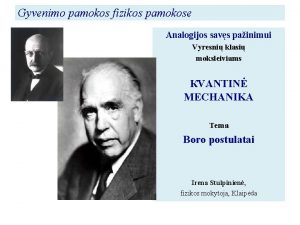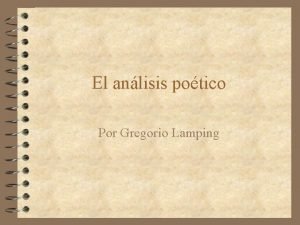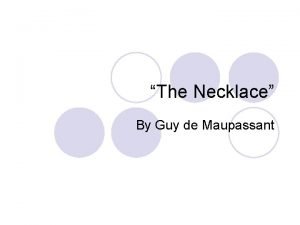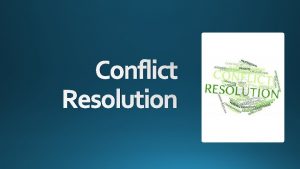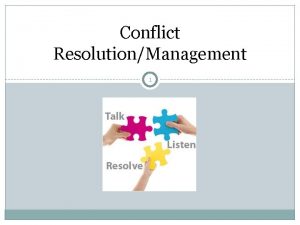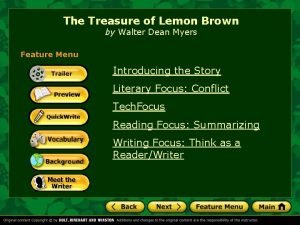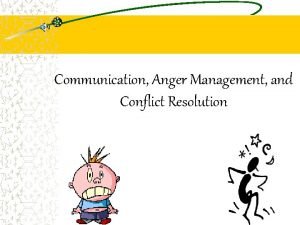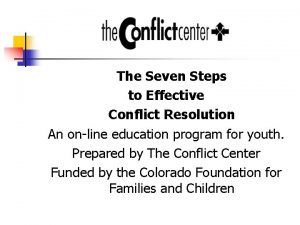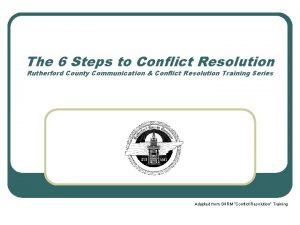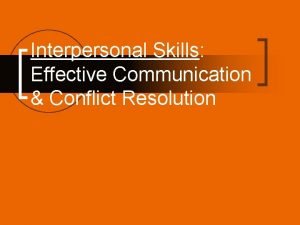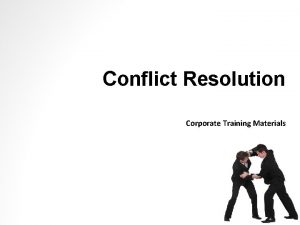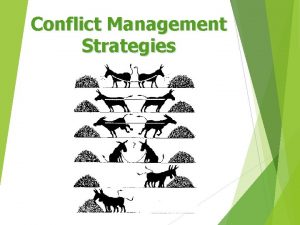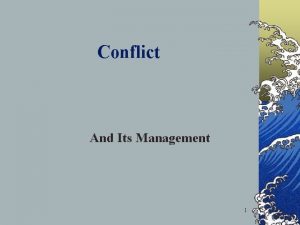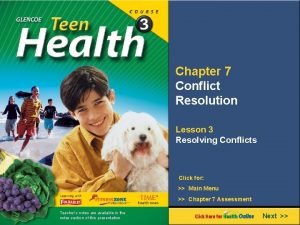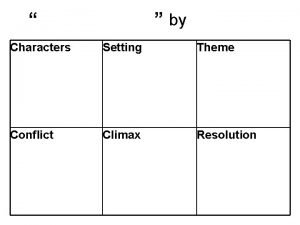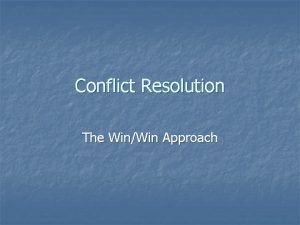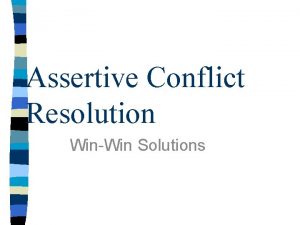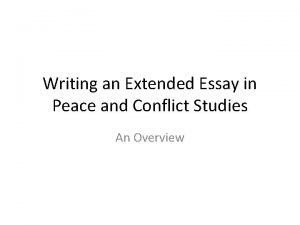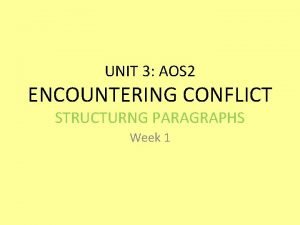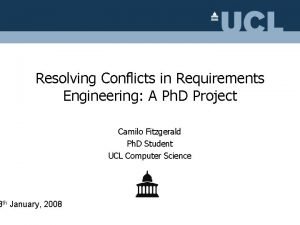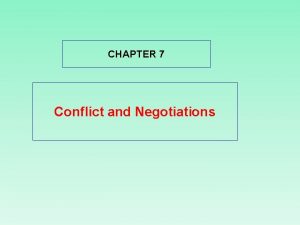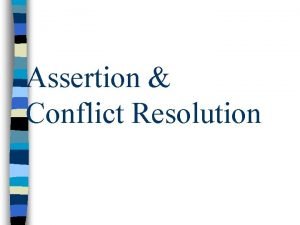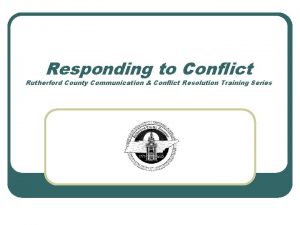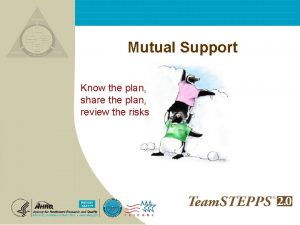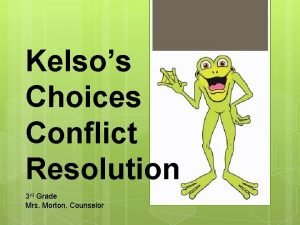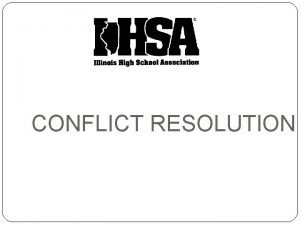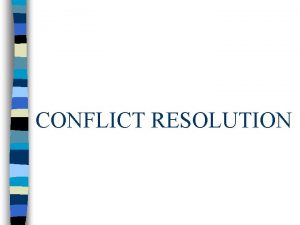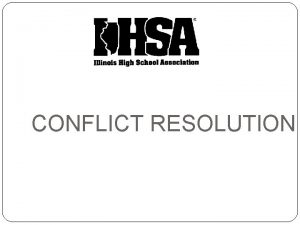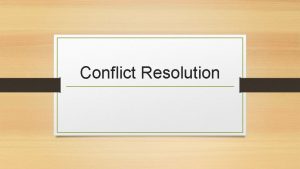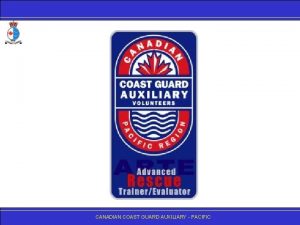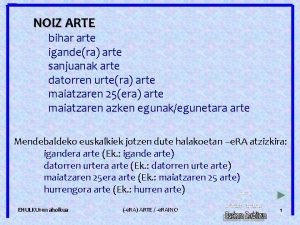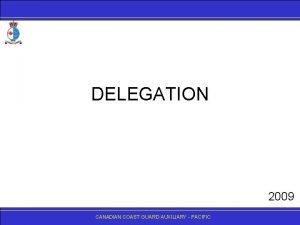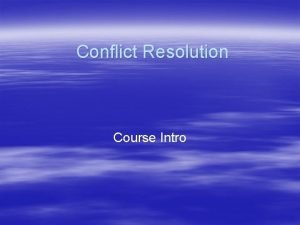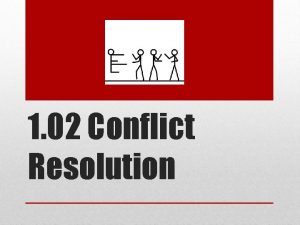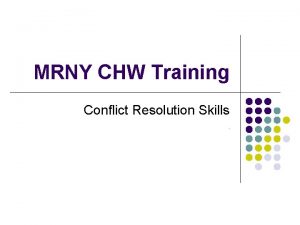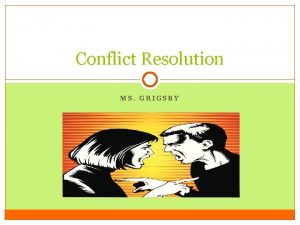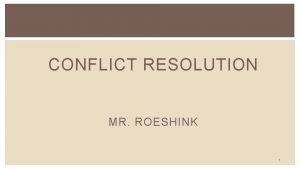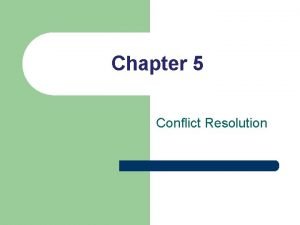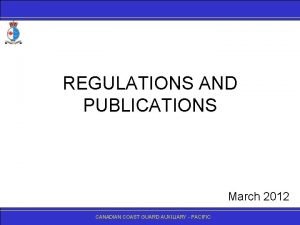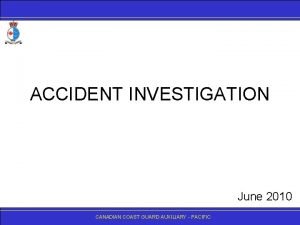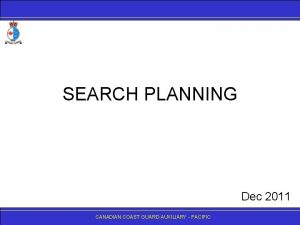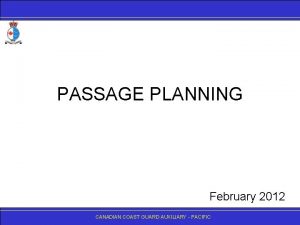CONFLICT RESOLUTION 2009 CANADIANCOASTGUARDAUXILIARY PACIFIC ARTE and SAVs








































- Slides: 40

CONFLICT RESOLUTION 2009 CANADIANCOASTGUARDAUXILIARY- -PACIFIC

ARTE and SAVs CANADIAN COAST GUARD AUXILIARY - PACIFIC

ARTE and SAVs • SAVs - Station Assistance Visits • ARTE - Advanced Rescue Trainer / Evaluator CANADIAN COAST GUARD AUXILIARY - PACIFIC

ARTE and SAVs • A Manager or Station can request a Station Assistance Visit to resolve a particular issue that may involve a: 1. Training deficiency 2. Personnel problem 3. Conflict within a station CANADIAN COAST GUARD AUXILIARY - PACIFIC

ARTE and SAVs • ARTE team members are used in this capacity, and may become aware of a situation that needs assessing. • Where issues appear straight forward, they may be able to deal with themselves. • However in more complex human resources situations, they would simply assess, and provide feed back to the Human Resources Manager. CANADIAN COAST GUARD AUXILIARY - PACIFIC

ARTE and SAVs • It is important therefore for ARTE Team members to be aware of the basics of conflict resolution, in order to: 1. obtain the necessary information needed for feedback 2. resolve some simple problems or conflicts that may arise. • It is extremely important that you don’t get in too deep! CANADIAN COAST GUARD AUXILIARY - PACIFIC

What is Conflict? CANADIAN COAST GUARD AUXILIARY - PACIFIC

What is Conflict? • “An opposition of opinions or purposes that may cause mental strife” – Fight – Argument – Disagreement – Heated Discussion CANADIAN COAST GUARD AUXILIARY - PACIFIC

Causes of Conflict CANADIAN COAST GUARD AUXILIARY - PACIFIC

Causes of Conflict 1 Conflict can stem from: • opposition • a clash of opposing ideas • disagreement • fight or battle • contention, hostility CANADIAN COAST GUARD AUXILIARY - PACIFIC

Causes of Conflict 2 • • • opposing viewpoints or opinions emotions selfishness miscommunication misunderstandings assumptions CANADIAN COAST GUARD AUXILIARY - PACIFIC

Ways People Often Deal With Conflict 1. Avoid the conflict 2. Smooth over the situation 3. One or both parties compromise 4. Confrontation 5. Power struggle 6. Consensus CANADIAN COAST GUARD AUXILIARY - PACIFIC

Paradigms • A theory, an explanation, or model of something else. • Wrong or Right map? Imagine you are navigating to find somewhere near Victoria and the chart you have is Vancouver. • The following examples show where two people will look at the same picture and see something different. CANADIAN COAST GUARD AUXILIARY - PACIFIC

Sleeping creature or dalmatian walking? CANADIAN COAST GUARD AUXILIARY - PACIFIC

Cartoon character playing trumpet or head of a girl? CANADIAN COAST GUARD AUXILIARY - PACIFIC

Duck or rabbit? CANADIAN COAST GUARD AUXILIARY - PACIFIC

Strategies to Get Past Paradigms (Perceptions) • • Avoid Assumptions Validation Listen Problem Solving Skills • Tell Your Story CANADIAN COAST GUARD AUXILIARY - PACIFIC

Conflict Resolution Strategies 1. Isolate the facts from the emotions: It is easy to get caught up in the emotion of the conflict but try to stick to the facts whenever possible. CANADIAN COAST GUARD AUXILIARY - PACIFIC

Conflict Resolution Strategies 2. Task versus relationship: Make decisions according to the rules of the organization, etc. Personal relationships and feelings should be set aside. CANADIAN COAST GUARD AUXILIARY - PACIFIC

Conflict Resolution Strategies 3. Listen more By listening to both verbal and nonverbal messages, you can gather more information to make accurate and fair decisions CANADIAN COAST GUARD AUXILIARY - PACIFIC

Conflict Resolution Strategies 4. Try to empathize with the person By showing empathy you are indicating that you are respectful of that individual’s perception and the emotions related to the conflict CANADIAN COAST GUARD AUXILIARY - PACIFIC

Conflict Resolution Strategies 5. Don’t be defensive Clarifying decisions should be a simple process when that decision is based on facts. CANADIAN COAST GUARD AUXILIARY - PACIFIC

The 3 -step Process for Handling Conflict 1. Remove the source of the problem 2. Change your perception of the problem 3. Use your coping resources - Flexibility - Communication - Problem solving CANADIAN COAST GUARD AUXILIARY - PACIFIC

A Simple fact 90% of conflict occurs not with what was said but the tone in which it was said! CANADIAN COAST GUARD AUXILIARY - PACIFIC

Communication: 1 Way or 2 Way CANADIAN COAST GUARD AUXILIARY - PACIFIC

Communication: 1 Way One Way Communication: Sender Message Receiver CANADIAN COAST GUARD AUXILIARY - PACIFIC

Communication: 2 Way Two Way Communication: Sender Feedback Message Receiver CANADIAN COAST GUARD AUXILIARY - PACIFIC

Barriers to Effective Communication CANADIAN COAST GUARD AUXILIARY - PACIFIC

Barriers to Effective Communication • Judging: 1. Criticizing 2. Name-calling 3. Diagnosing CANADIAN COAST GUARD AUXILIARY - PACIFIC

Barriers to Effective Communication Sending Solutions: 1. Ordering 2. Threatening 3. Moralizing 4. Excessive questioning 5. Advising CANADIAN COAST GUARD AUXILIARY - PACIFIC

Blocking Phrases • • Ordering, directing, commanding Warning, threatening Preaching, moralizing Advising Judging, criticizing, blaming Interpreting, assuming Ridiculing, shaming CANADIAN COAST GUARD AUXILIARY - PACIFIC

Active Listening and Talking CANADIAN COAST GUARD AUXILIARY - PACIFIC

Active Talking • Reflect meaning- respond to both the content and the feeling • Paraphrasing-putting in different words what the other person has said • Summarizing- identify the main themes by recapping and focusing on what is next • If you don’t understand ask! CANADIAN COAST GUARD AUXILIARY - PACIFIC

Active Listening Active listeners should: • S face the person SQUARELY • O adopt an OPEN posture • L LEAN slightly toward the other person • D be at a DISTANCE apart of about 1 metre • E keep good EYE contact • R try to be RELAXED CANADIAN COAST GUARD AUXILIARY - PACIFIC

Strategies to Resolve Conflicts CANADIAN COAST GUARD AUXILIARY - PACIFIC

Strategies to Resolve Conflicts • Assume you do not have all the answers. • Ask questions to understand the other person(s). • Be prepared to compromise or make a deal. • Postpone. • Enforce. • Compromise. • Explore. CANADIAN COAST GUARD AUXILIARY - PACIFIC

Strategies to Resolve Conflicts • Turn. . . CANADIAN COAST GUARD AUXILIARY - PACIFIC

Strategies to Resolve Conflicts CANADIAN COAST GUARD AUXILIARY - PACIFIC

Strategies to Resolve Conflicts into . . . CANADIAN COAST GUARD AUXILIARY - PACIFIC

Strategies to Resolve Conflicts CANADIAN COAST GUARD AUXILIARY - PACIFIC
 Savs
Savs Savs
Savs What is conflict and conflict resolution?
What is conflict and conflict resolution? High resolution low resolution
High resolution low resolution Matronium
Matronium Romance del prisionero figuras retoricas
Romance del prisionero figuras retoricas Que es rima consonante
Que es rima consonante Center for african peace and conflict resolution
Center for african peace and conflict resolution What is the setting of the necklace?
What is the setting of the necklace? Watch mastering conflict management and resolution at work
Watch mastering conflict management and resolution at work Settings of the alchemist
Settings of the alchemist Watch mastering conflict management and resolution at work
Watch mastering conflict management and resolution at work Internal conflict in the treasure of lemon brown
Internal conflict in the treasure of lemon brown Conflict norming exercise
Conflict norming exercise Anger management and conflict resolution
Anger management and conflict resolution Anger management and conflict resolution
Anger management and conflict resolution Cudsa conflict resolution model
Cudsa conflict resolution model Work immersion portfolio design
Work immersion portfolio design What are the 7 steps in conflict resolution?
What are the 7 steps in conflict resolution? 6 steps to resolve conflict
6 steps to resolve conflict Conflict resolution customer service
Conflict resolution customer service Accountability in conflict resolution
Accountability in conflict resolution Conflict resolution outline
Conflict resolution outline Conflict resolution is a(n) communication skill
Conflict resolution is a(n) communication skill Conflict resolution training materials
Conflict resolution training materials Conflict management exercise
Conflict management exercise Scope of conflict resolution
Scope of conflict resolution Steps in the mediation process
Steps in the mediation process Zoo by edward hoch theme
Zoo by edward hoch theme Staben conflict resolution
Staben conflict resolution Win win situation examples conflict resolution
Win win situation examples conflict resolution Assertive conflict resolution
Assertive conflict resolution Peace topic
Peace topic Conflict resolution paragraphs
Conflict resolution paragraphs Conflict resolution in software engineering
Conflict resolution in software engineering Superordinate goals conflict resolution technique
Superordinate goals conflict resolution technique Passive conflict resolution
Passive conflict resolution Six steps to conflict resolution
Six steps to conflict resolution Desc conflict resolution
Desc conflict resolution Staben conflict resolution
Staben conflict resolution Kelso conflict resolution
Kelso conflict resolution
